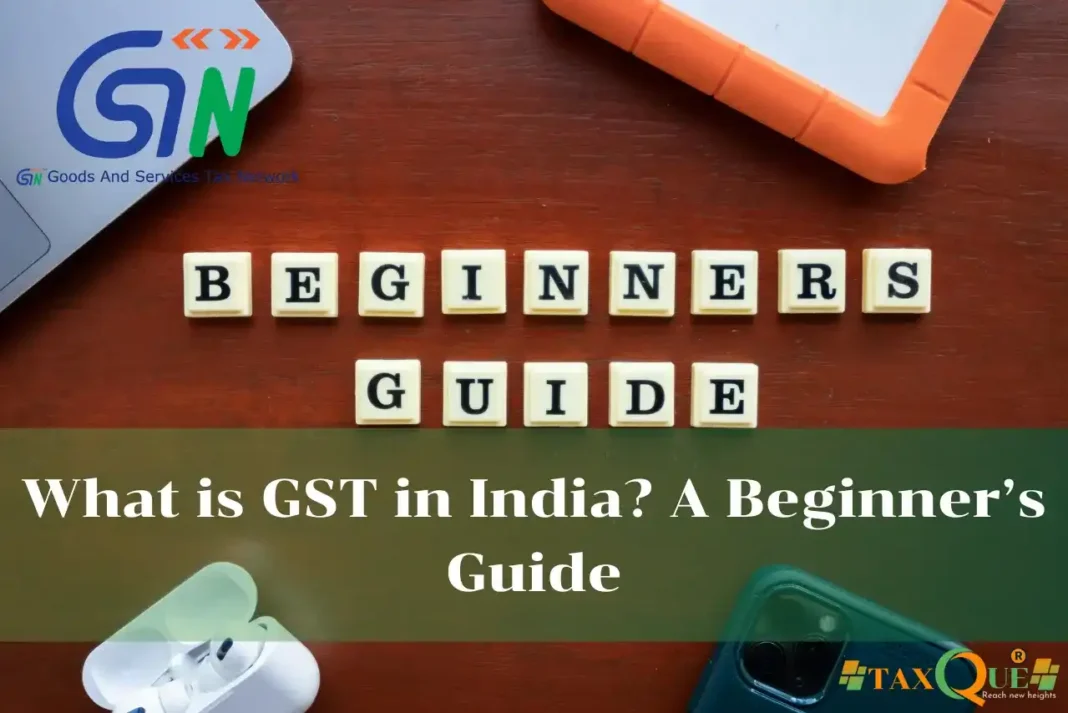New to GST? Here’s Everything You Need to Know to Understand It in 2025!
Introduction
Since its launch in 2017, the Goods and Services Tax (GST) has revolutionized the way taxes are collected and paid in India. Whether you’re a business owner, a freelancer, or simply curious about the Indian tax system, understanding GST is essential. This beginner’s guide breaks down what GST is, why it was introduced, how it works, and what it means for you in 2025 and beyond.
What is GST (Goods and Services Tax)?
GST is a comprehensive, multi-stage, destination-based indirect tax that is levied on every value addition. It replaced a complex structure of multiple indirect taxes like VAT, service tax, excise duty, and more. GST is governed by the GST Act 2017 and applies uniformly across India.
Why It Matters
- Simplifies Tax Structure: One tax for the entire country.
- Eliminates Cascading Effect: No more “tax on tax.”
- Boosts Compliance: With an online system and e-invoicing.
- Enhances Ease of Doing Business: Uniformity encourages interstate trade.
- Increases Transparency: More visibility in tax reporting.
Step-by-Step Guide: How GST Works
1. Types of GST
GST in India is categorized into four types:
| Type | Applicable When | Collected By |
|---|---|---|
| CGST | Intra-state sales | Central Govt |
| SGST | Intra-state sales | State Govt |
| IGST | Inter-state sales | Central Govt (shared later with state) |
| UTGST | Union Territories | Union Territory Govt |
Example: If a seller in Maharashtra sells goods to a buyer in Maharashtra, CGST + SGST apply. If sold to Delhi, IGST applies.
2. GST Registration
- Mandatory for businesses with turnover exceeding ₹40 lakh (goods) / ₹20 lakh (services)
- Voluntary registration available
- Register via: https://www.gst.gov.in/
3. GST Returns & Filing
- Common forms: GSTR-1, GSTR-3B, GSTR-9
- Monthly and annual filing
- All filings are done online at GST Portal
4. Input Tax Credit (ITC)
Businesses can claim credit on taxes paid for inputs used in production or resale.
Example: If you pay ₹18 GST on raw materials and collect ₹18 GST on sales, net GST payable = 0.
5. GST Rates
GST is divided into four main slabs:
- 5% – Essentials (e.g., food items, footwear)
- 12% – Processed food, mobile phones
- 18% – Most services and goods (e.g., electronics, restaurants)
- 28% – Luxury goods, sin items (e.g., tobacco, luxury cars)
GST rates are decided by the GST Council and are updated periodically.
Common Mistakes to Avoid
- Not registering for GST when required
- Filing wrong GST returns or skipping filings
- Incorrectly claiming input tax credit
- Charging the wrong GST rate on invoices
- Not reconciling books with GSTR-2B
Conclusion
GST was introduced to bring consistency, simplicity, and efficiency to India’s complex tax structure. While it may seem overwhelming at first, understanding its basics can help businesses and individuals remain compliant and take full advantage of its features, like input tax credit and simplified filing. Whether you’re a business owner, service provider, or simply a curious taxpayer, grasping GST is key to making informed financial decisions in 2025.
FAQs
Q1. Is GST applicable to freelancers and online sellers?
Yes, if your turnover exceeds the threshold or you’re selling inter-state.
Q2. What is the penalty for not registering for GST?
A penalty of ₹10,000 or the tax evaded (whichever is higher).
Q3. Can I file GST returns myself?
Yes, through the GST portal, or with help from a tax consultant.
Q4. Is GST applicable on exported goods?
No. Exports are zero-rated under GST.
Q5. Can a small business opt out of GST?
If turnover is below the threshold and no inter-state or e-commerce supplies are made, then yes.





